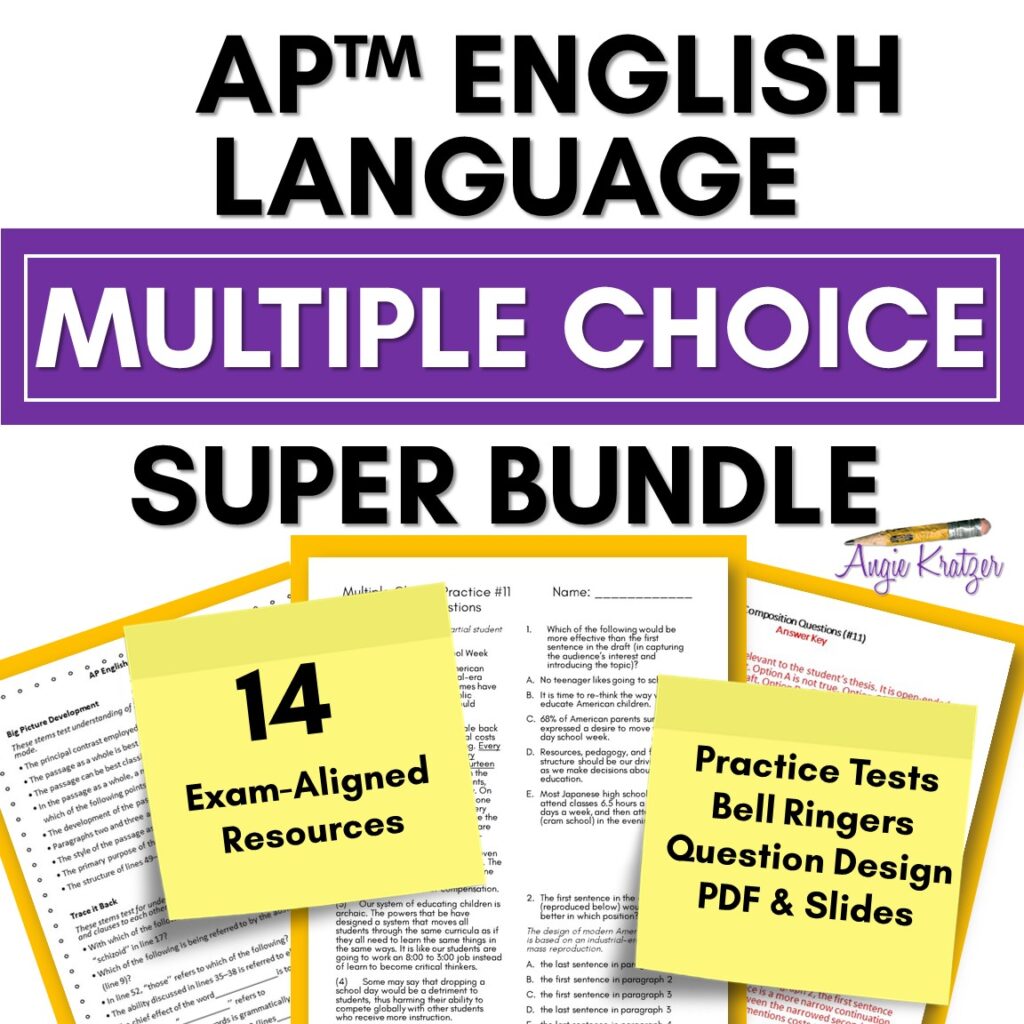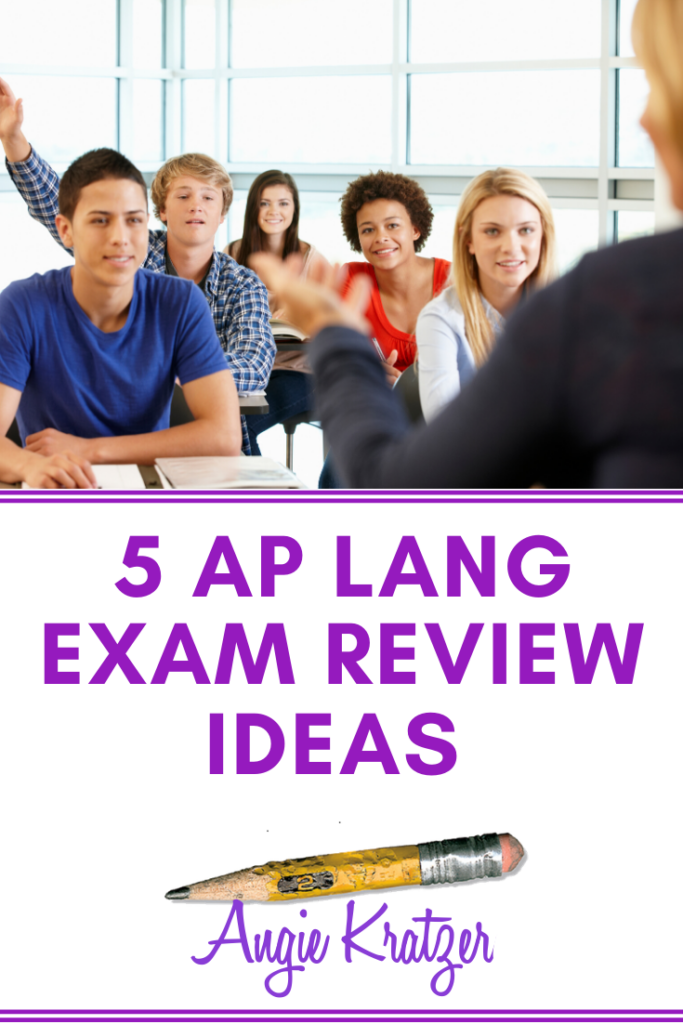
Just in case you’re new to this whole AP Lang thing: April is NOT the time to squeeze in that last bit of new content or that skill you just never addressed. It’s over. Those ships have sailed. While half the class is out taking other AP exams, the rest of you can get in some review. Here are five ways to get it done.
Five Corners: Multiple choice practice really does not have to be torture. Get students moving and make strategy review fun with this collaborative competition. Read more about the process here.

Multiple Choice Snacks: Between now and the exam, start each class with a short passage and a couple of exam-aligned questions. Keep the stakes low (no grade) and simply practice reading the stems ahead of time (to prep the brain for what’s coming) and eliminating answers quickly. Remember that there will be an “obviously” wrong answer (but not so obviously), two choices that can be eliminated because they are synonymous or simpler misreadings of the text, and a foil that is SO CLOSE to correct but not quite there. Students should practice quick elimination of three choices so that they can devote their time to differentiating between the foil and the correct answer. Here is a bundle of “snacks” I created, and since College Board (in time for the 2020 exam) is eliminating many of the question types I used to make these exercises, I dropped the price significantly. Once I make revisions, you’ll get those for free, even when the price goes back up. Don’t need it all? You can grab just one set of five exercises if you like.
Thesis Statement Smackdown: Distribute a rhetorical analysis prompt and give students ten minutes to sketch out SOAPS, decide what the author’s tones are (an AP RA prompt will be complex enough for a student to identify at least two tones, either through layers or a shift), and write a thesis statement. All thesis statements are posted somehow (either around the room, on the board, or on a platform like Google Drive), and students vote on the three strongest ones. For a gallery walk, give each student three sticky notes and have them place them on or beside their faves. Once voting is over, walk through the strongest ones as a whole group. If it has been a while since you discussed rhetorical analysis, revisit the rhetorical triangle, SOAPS, and their tone vocabulary. Get this free list of categorized tone words.
Synthesis Source Search: Distribute a synthesis prompt and give class time for all students to read the sources. Reading the sources ahead of time for homework will work as well. Assemble the students in groups of three to four (no more) and give each student a thesis statement. (This one will take a bit of prep because the thesis statements could come from the brilliant mind of the teacher or the mined responses from the anchor papers.) Each group is to come to consensus on the three or four sources that will work best in defense of the thesis statement it was given. Each group then makes a brief presentation to the class defending the sources the members chose. Each group could have a unique thesis, or all teams could have the same one.
Opposite Arguments: To remind students of the importance of dealing with the opposition, give them a simple prompt like this one: Our school district is considering a proposal that we do away with homework. Ask students to pick a stance they could most easily defend and then require them to outline the opposite argument. This exercise would work well as a repetitive drill with several prompts.
So which ones are needed most? Base that decision on who is in the room. If half the class is out for AP Stats, decide what the remaining students need. You could even hold after-school tutorials based on each of the five strategies and invite students to come to the one(s) they need. However you do it, keep it engaging and relevant to the students in front of you.
Feeling overwhelmed by it all? Hop on Angie’s email list and you’ll immediately get in your inbox a pacing guide for the course. Every week or two, look for tips, tricks, freebies, resource update announcements, and a meme or two. Unsubscribe at any time.


